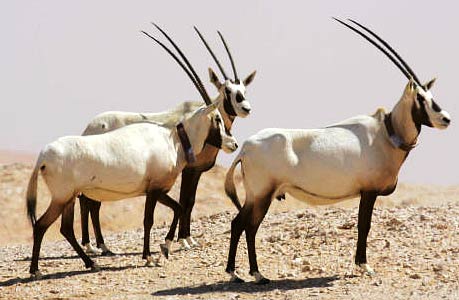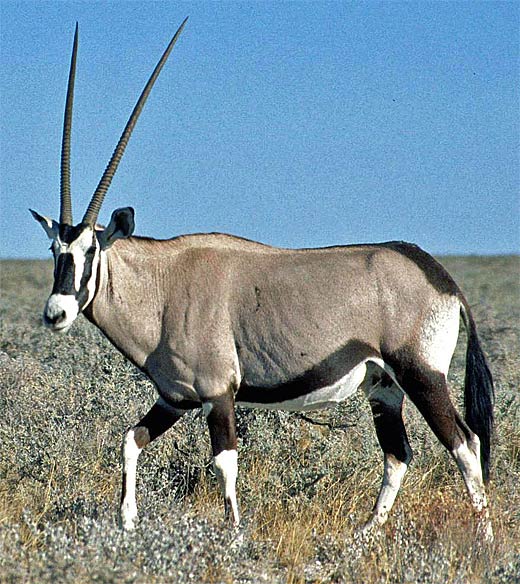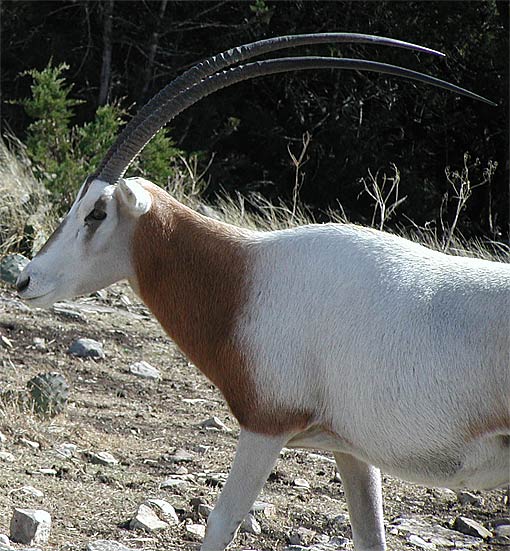Oryx – Powerful Desert Antelope

Arabian Oryxes
There are four species of oryx, which are large antelope. Three of the oryx species live on the African continent, while the fourth is native to the Arabian Peninsula. The Arabian Oryx almost became an extinct species, and was only saved by the introduction of a captive breeding program.
The Arabian Oryx is the smallest of the three in size, as well as numbers. Already extinct in the wild by 1972, captive bred animals were re-introduced in Oman. Their numbers are still small today, with only 1,100 living in the wild. Poaching is the biggest threat to their survival.
African Oryx Species
The large Scimitar Oryx is native to North Africa and was at one stage thought to be extinct in the wild. There are several thousand living on game reserves, and some have been re-introduced into the wild. Groups of wild oryx have been reported in Niger and Chad.
The East African Oryx and the Gemsbok have greater numbers and are thus not as threatened as their cousins. Gemsbok were introduced in New Mexico, at the White Sands Missile Range. Only 93 Gemsbok were brought to the area, and their numbers are now around 4,000. Hunting is permitted, with a valid license and under strict regulations.

Gemsbok
All the African species are fairly large and very fast and powerful. Both males and females have long, sharp horns. Females use their horns to protect themselves and their young from predatory attacks. Males use their horns for territorial conflict with other males.
Male and female are often misidentified by hunters, due to their similarity in build and equally long horns. The big difference between their horns, is that male horns are completely straight, while female horns have a slight outward curvature, much like a sword. This means that the female horns are more coveted as trophies than the male horns.
Living in Dry Conditions
All species, and in particular the Gemsbok, can survive for long periods without drinking water. They have been known to live for weeks without needing fresh water. They derive a lot of their water from the succulents, leaves and wild melons they eat.

Scimitar Horned Oryx
Even the plants that the oryx feed on, have adapted to living in desert and semi-desert conditions. They gather moisture from dew that forms at night and early morning, and release it during the heat of the day. Oryx feed on these plants before dawn, or twilight, to get the maximum moisture from the plants.
